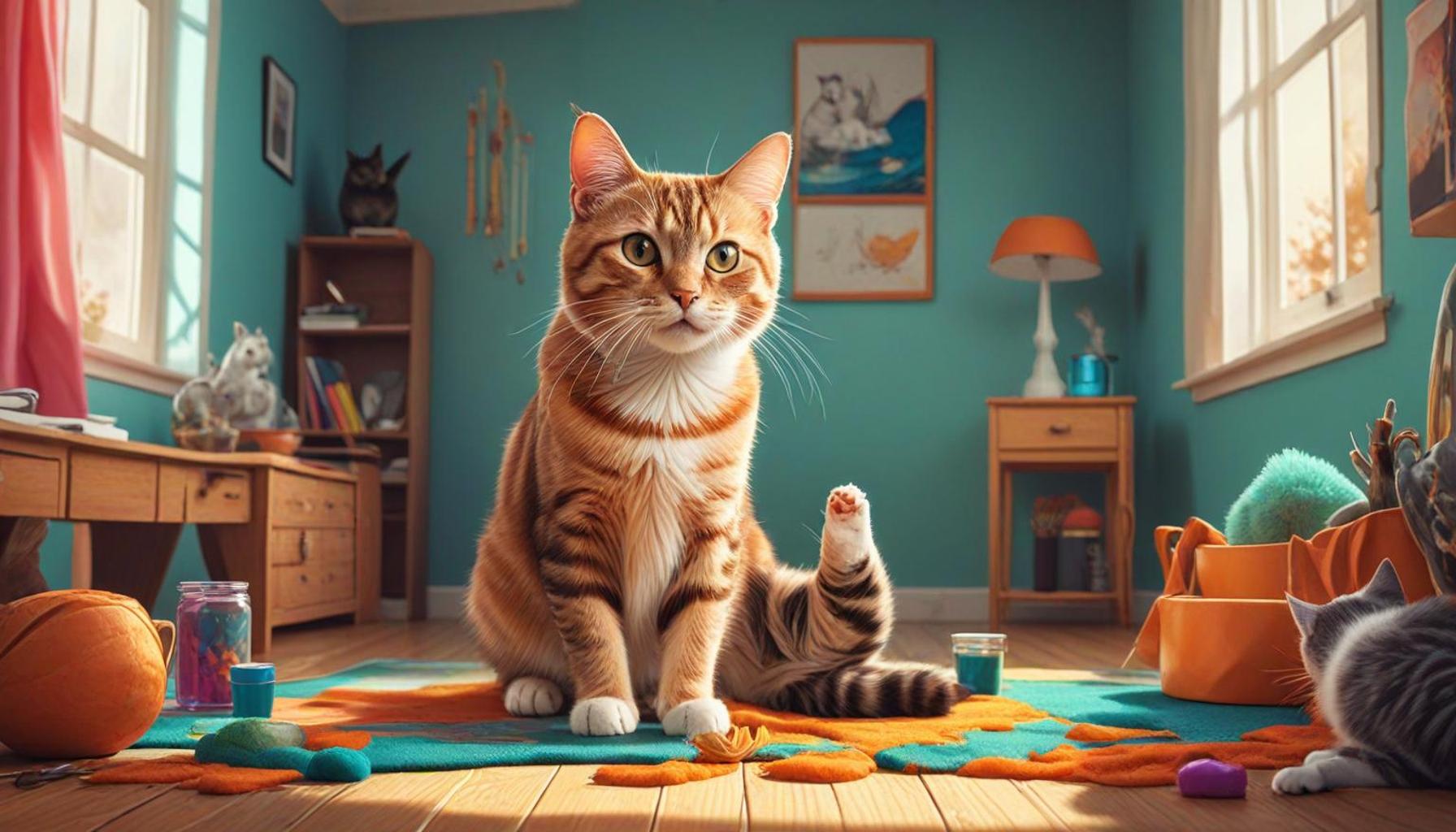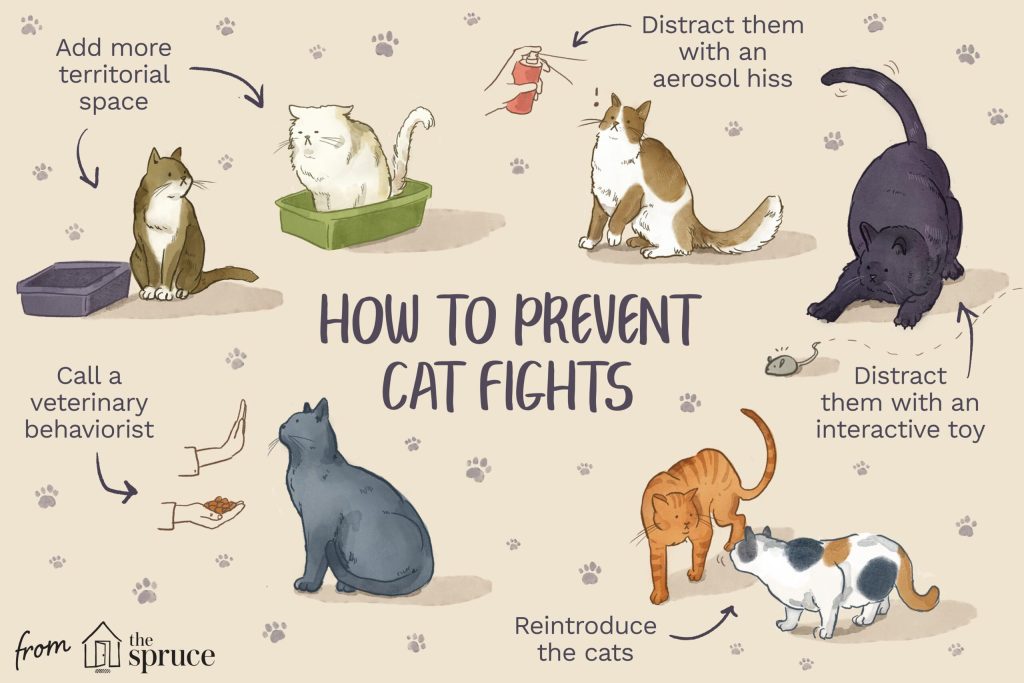Behavioral Training Strategies for Cats Ensure Harmony at Home

The companionship of cats offers unique joys and challenges for pet owners. Feline friends bring warmth, affection, and entertainment into a household, but they can also mystify with their unpredictable behaviors. Whether it’s the sudden sprint across a room or the uncanny ability to find the most inconvenient nap spots, cats consistently keep their owners on their toes.
Understanding and managing their behavior is crucial for ensuring a peaceful household. Recognizing the signs of what your cat is trying to communicate can lead to a more stable and restful environment for everyone involved. From deciphering the subtle differences in a meow to appreciating the nuances of tail language, pet owners equipped with this knowledge can preemptively address potential issues.
With effective training strategies, you can foster a more harmonious environment for both you and your feline friend. Training not only involves curbing undesirable habits but also encourages positive interactions, enhances mental stimulation, and promotes a more loving and interactive relationship.
Why Behavioral Training Matters
- Improved Communication: Establishes a clear line of understanding between you and your cat. Cats, although independent, rely on interaction with their human companions. Understanding their signals can prevent many common misunderstandings.
- Reduced Stress: Helps to alleviate anxiety and behavioral issues that may arise. Many problems such as scratching furniture or excessive meowing can stem from stress, which can be mitigated through targeted interventions.
- Stronger Bond: Enhances the relationship, leading to a more engaging companionship. A cat that feels secure in its environment will display more affection and trust towards its owner, enriching the social connection.
What to Expect
This article will explore the top strategies that can be easily implemented at home. These methods are designed to be straightforward, requiring no special equipment or previous training experience.
We’ll present a concise Top 5 list of effective behavioral training techniques. This will include methods such as reward-based training, understanding the importance of space and territory, and the strategic use of play for behavioral cues. Each technique will be explained with practical examples, making it accessible for any cat owner to grasp.

These insights will not only empower you as a cat owner but also enrich your pet’s quality of life. By taking the time to educate yourself about your cat’s needs and behaviors, you’ll be fostering an environment where your pet can thrive emotionally and physically.
SEE ALSO: Click here to read another article
Top 5 Behavioral Training Strategies for Cats: Ensuring a Harmonious Home Environment
Creating a peaceful coexistence with our feline friends involves mastering the art of behavioral training. Cats, with their unique personalities and mysterious charm, require specialized strategies to help them thrive in a home environment. Possessing a natural curiosity and independence, cats enrich our lives in unexpected ways, yet their behaviors can sometimes confound even the most seasoned cat lovers. Understanding these behaviors and employing effective training strategies can significantly enhance the relationship between humans and their feline companions. Here is a ranked list of five behavioral training strategies that will help you foster a harmonious relationship with your cat. Each strategy is designed to align with the innate tendencies of cats, making home life enjoyable for all.
5. Understanding Feline Body Language
The cornerstone of a harmonious environment with your cat is an understanding of their body language. Unlike dogs, which may express themselves more vocally, cats communicate primarily through subtle body movements and expressions. Deciphering these signals can transform your interactions with them.
Common signs to watch for include:
- Tail Position: The tail is often a mood barometer for cats. A high tail perpendicular to the ground usually indicates happiness and confidence, while a low or tucked tail can signal fear or submission. A puffed tail suggests the cat is startled or agitated.
- Ears: Forward-facing ears indicate interest and attention, whereas rotating or flattened ears can mean irritation, fear, or a defensive posture.
- Eyes: A slow blink from your cat can be interpreted as a sign of trust and affection, often called a “kitty kiss.” Conversely, wide, dilated pupils are typically a reaction to excitement, surprise, or fear.
By learning to read these subtle signals, you can avoid misunderstandings and reduce stress, creating a calmer, more understanding home environment.
4. Positive Reinforcement Techniques
A powerful tool in the realm of feline training is positive reinforcement. Cats, much like humans, are naturally inclined to repeat behaviors that result in a rewarding outcome. This approach involves encouraging good behavior through immediate rewards, which could be treats, praise, or interactive play. It shifts the focus from punishment to encouragement.
Key points for positive reinforcement include:
- Timing is crucial. Ensure that rewards are given immediately after the desired behavior is exhibited to clearly associate the action with positive outcomes.
- Choose rewards wisely. Opt for small, healthy treats to prevent overfeeding and maintain your cat’s health.
- Consistency is key. Consistent rewards help strengthen the association between actions and consequences, helping your cat understand what is expected.
Positive reinforcement fosters an environment where your cat is motivated to behave well, leading to a satisfying and rewarding relationship over time.
3. Gradual Desensitization
Cats can sometimes exhibit fear or anxiety towards specific sounds, situations, or objects. Employing gradual desensitization can gently introduce your feline to these fear-inducing elements, improving their comfort over time. This method approaches fear reduction in a gradual manner, allowing your cat to adjust at their own pace.
Steps to implement gradual desensitization include:
- Identify the root cause of your cat’s fear. This could be anything from loud household appliances to other animals.
- Introduce the feared element at a distance or at a low intensity. This could mean moving a scary object further away or playing a loud noise softly.
- As your cat shows tolerance, slowly decrease the distance or increase the noise level. Always reward calm behavior with treats or affection.
This patient approach can significantly enhance your cat’s confidence and help mitigate anxiety-related behaviors, leading to a more relaxed home atmosphere.
2. Environmental Enrichment
Recognizing a cat’s inherent need for curiosity and play, environmental enrichment becomes an essential strategy. Cats are natural hunters and explorers, and providing a stimulating environment caters to these instincts, minimizing boredom and related negative behaviors such as scratching furniture or excessive meowing.
Consider these enrichment strategies:
- Introduce interactive toys that mimic prey and activate hunting instincts, like feather wands or laser pointers.
- Offer vertical spaces like cat trees and shelves, providing opportunities for climbing and surveying their territory.
- Facilitate access to outdoor scenes with safe window perches to satisfy their instinctual interest in bird watching or tracking other wildlife.
An engaged and stimulated cat is typically happier and less prone to behavioral issues, fostering a more peaceful and satisfying coexistence.
1. Establishing a Structured Routine
The most effective strategy for ensuring a harmonious home with cats revolves around establishing a structured routine. Cats, much like humans, benefit from predictability and routine. A regular schedule reduces anxiety and helps manage behavioral challenges, making daily life simpler for both parties.
Elements of an effective routine might include:
- Setting regular feeding times helps maintain a stable appetite and prevents unhealthy snacking habits.
- Dedicated play sessions allow cats to expend energy constructively, reducing the likelihood of destructive behavior.
- Incorporating daily grooming sessions can reinforce bonds and ensure your cat remains comfortable and well-groomed.
Building a structured daily routine not only instills a sense of security for your cat but also nurtures a trusting and loving bond, ensuring a peaceful and enjoyable relationship for both of you.
By following these five behavioral training strategies, you are on the path to ensuring a harmonious coexistence with your beloved felines. By understanding and responding to their needs with patience and respect, you improve not only your relationship but also create a happy and balanced home. Remember, each cat is unique and requires a tailored approach, so stay observant, persistent, and sensitive to their needs for the best results.
| Category | Details |
|---|---|
| Behavioral Training Techniques | Implementing techniques like positive reinforcement can greatly improve a cat’s behavior. Reward systems for desirable actions encourage learning and mimic natural behaviors. |
| Socialization Strategies | Introducing your cat to different environments, people, and even other animals can reduce anxiety and improve social skills. Gradual exposure is key for a harmonious household. |
| Understanding Feline Body Language | Recognizing signs of stress or comfort in your cat’s body language enhances communication. For example, a twitching tail or flattened ears can indicate different emotional states, guiding your reactions. |
| Creating a Stimulating Environment | Using interactive toys, climbing structures, and scratching posts encourages physical activity and mental stimulation, which are vital for reducing behavioral problems and keeping your cat engaged. |
CHECK OUT: Click here to explore more
Frequently Asked Questions on Behavioral Training Strategies for Cats
What are the basic behavioral training strategies for cats?
Behavioral training for cats involves various strategies aimed at ensuring a harmonious coexistence within a household. These strategies include positive reinforcement, where good behavior is rewarded with treats or affection, and the use of environmental enrichment, which stimulates their natural instincts through toys and play. Understanding a cat’s body language is also crucial, as it helps identify stressors or triggers that may lead to unwanted behavior.
How can I use positive reinforcement effectively with my cat?
To effectively use positive reinforcement, it’s essential to identify what your cat finds rewarding, whether it be treats, praise, or petting. Consistency is key; reward the desired behavior immediately to reinforce the connection. It’s also important to ensure that the rewards are given immediately after the desired action to strengthen the behavior over time.
Are there specific training tools that can help with cat behavior?
Yes, there are various training tools available to assist with managing and modifying cat behavior. Clickers are commonly used for clicker training, which employs a clicking sound to signal correct behavior, preceding a reward. There are also calming products, like sprays or diffusers, which can help alleviate stress-related behavior in cats by mimicking calming pheromones.
What common behavioral issues might cats display, and how can I address them?
Common behavioral issues in cats include scratching furniture, aggression, and litter box avoidance. Scratching can be managed by providing appropriate scratching posts and pads, while aggression might require identifying triggers and ensuring safe spaces for the cat. Litter box issues often necessitate investigating both the cleanliness and location of the box, as well as any recent changes in the cat’s environment or routine.
How important is environmental enrichment in preventing behavioral problems?
Environmental enrichment plays a crucial role in preventing behavioral problems. By simulating a cat’s natural habitat, it encourages mental and physical stimulation, reducing boredom and the likelihood of problematic behaviors. Incorporating interactive toys, climbing structures, and regular play sessions can significantly enhance a cat’s well-being and contentment at home.
CHECK OUT: Click here to explore more
Conclusion
In exploring effective behavioral training strategies for cats, this article underscores the importance of understanding feline nature and establishing a peaceful cohabitation. Central to achieving this harmony are the top strategies discussed: consistency in training, positive reinforcement, environmental enrichment, understanding body language, and patience.
Consistency in training reinforces desirable behaviors while minimizing confusion. Positive reinforcement, rather than punishment, builds trust and promotes obedience. Incorporating environmental enrichment satisfies a cat’s natural instincts and reduces stress and anxiety. Comprehending their distinct body language can prevent misunderstandings, deepen the human-feline bond, and facilitate training. Lastly, exercising patience is crucial, as training is an ongoing process unique to every individual cat.
The significance of these strategies cannot be overstated, as they not only enhance the quality of life for cats but also significantly improve the owner’s experience as a pet guardian. By investing time and effort into these training methods, one ensures a harmonious household where both humans and feline companions coexist peacefully. Furthermore, these practices open the door for strengthening the deeply rewarding relationship between pet and owner.
Cats, with their sometimes enigmatic behaviors, offer endless opportunities for exploration and understanding. Delving into these strategies provides a lens into their world, encouraging a deeper dive into their needs and enriching the experience of feline companionship. As owners, we are entrusted with the responsibility of nurturing this bond, transforming not only the life of our pets but enhancing our homes with love and mutual understanding.



